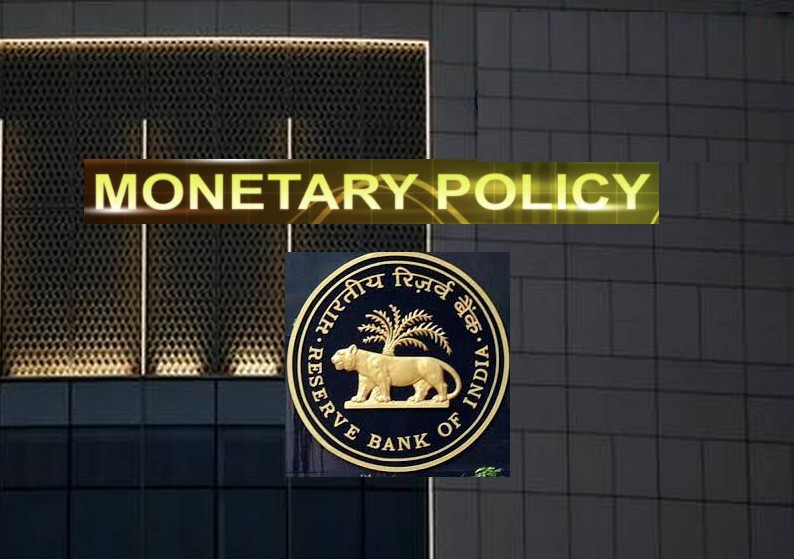RBI Monetary Policy Committee (MPC) has decided to maintain status quo and keep interest rates unchanged. Currently, the repo rate is 4% and reverse repo rate is 3.35%. The CPI inflation forecast for 2021-22 has been revised to 5.7% from 5.1%.
Reserve Bank of India (RBI) Governor Shaktikanta Das said the policy stance continues to be “accommodative”. The MPC has retained its GDP growth projection of 9.5% for FY22.
MPC has kept the repo rate and reverse repo rate steady for the seventh consecutive time in August 2021. The monetary policy decision of status quo on interest rates was unanimous by all the six MPC members. The vote on continuing with the accommodative policy stance was 5:1.
RBI said it will undertake a secondary market government securities acquisition programmme or G-SAP 2.0 worth Rs 50,000 crore in two tranches this month to enable an orderly evolution of the yield curve.
“Our recent G-SAP auctions that have focussed on securities across the maturity spectrum are intended to ensure that all segments of the yield curve remain liquid,” RBI Governor Shaktikanta Das said while announcing the third bi-monthly monetary policy. The Reserve Bank’s secondary market G-sec acquisition programmme (G-SAP) has been successful in anchoring yield expectations while eliciting a keen response from market participants, he noted.
RBI deputy governor M K Jain said RBI is closely watching the stressed assets situation in the banking sector, particularly in the retail and micro, small and medium enterprises segments (MSME).
“However, there is no alarming situation at this point. There is some stress visible in the retail and MSME segments. We are closely monitoring…there is stress but not alarming,” said M K Jain.
RBI has decided to amend the guidelines related to (i) export credit in foreign currency and (ii) restructuring of derivative contracts. Banks will be permitted to extend export credit in foreign currency using any other widely accepted Alternative Reference Rate in the currency concerned.
Since the change in reference rate from LIBOR is a “force majeure” event, banks are also being advised that change in reference rate from LIBOR/ LIBOR related benchmarks to an Alternative Reference Rate will not be treated as restructuring.
RBI has attempted and managed to balance the contradicting objectives of managing inflation expectations while also communicating the need for sustained policy accommodation. Even as the inflation forecasts for the current FY have been raised, the communication continues to be that the hump in inflation is supply-led and thus ‘transitory’ wherein the demand side push for inflation is almost absent. This is the reason for RBI to have been able to see-through the current high inflation levels. RBI continues to highlight that any pre-emptive tightening can kill the nascent and hesitant recovery that is taking shape. In cognizance with an extremely uncertain growth climate, we think that the RBI will maintain its accommodative policy and not move on any form of tightening – be it on the rates side or on the liquidity side – till the end of the current FY.—Indranil Pan, Chief Economist – YES BANK
“The corporate earnings season has kicked off on a relatively healthy note. This, coupled with healthy foreign inflows, improving public health situation and gradual uptick in trade is reflected comprehensively in broader indices. However, one must remain wary of looming risks in the form of lingering threat to public health, relatively fragile state of the capex cycle and risks associated with supply-induced inflation. The central bank maintains status quo in good acknowledgement of the problems associated with a pre-emptive reaction to reflationary trends, especially when the broader economics is struggling to get a stronger grip of expected revival.” —Nirav Karkera, Head of research, Fisdom
With economic recovery on a positive note following a second wave of Covid 19, growth needs to be carefully nurtured in the context of a relaxation in economic activities. This can be done by giving a fillip to the economy by incentivizing real estate. For this to happen, we expected a cut in rates which would have sent positive signals to economic and real estate players. Not only would the cuts have bolstered greater demand for homes as the interest regime would have been lower, there would have been greater infusion of capital in the market, enabling easier supply-demand transactions. The regular home buyer would ofcourse take advantage of low interest rates prevailing now, but the overall demand in the real estate sector at a holistic level would have gone up further, thus giving a fillip to the economy. Ramani Sastri – Chairman & MD, Sterling Developers Pvt. Ltd
Keeping in mind the current scenario, a slight reduction in the key rates would have been widely celebrated as low interest rates have been a crucial factor in the revival of the demand in the real estate sector overall. We have already seen early signs of improvement in economic activity following the easing of some restrictions post the peaking of the second wave. To bolster this growth and revive the economy, a rate cut would have further improved the liquidity situation, which is vital for the real estate sector. While the consumer is enjoying low home loan rates currently, a cut would have further intensified demand. A continuation of low interest rates regime works well for borrowers. There is a need for stimulant policy measures that would enhance and ease credit provisions and increases buyer’s confidence. —Lincoln Bennet Rodrigues, Founder and Chairman, Bennet & Bernard Group
“RBI MPC in a trade-off between growth and inflation have leaned towards accommodative stance for growth providing impetus to demand side dynamics and maintain targeted GDP growth. However, it is increasingly becoming clear that inflation will be priority going forward. This unchanged interest regime will continue to support real estate demand through induced demand as moving forward the upward interest regime tracking upward growth will increase home loan and lending rates pushing buyers and borrowers to take advantage of current low interest regime.—-Ramesh Nair, Chief Executive Officer, India & Managing Director, Market Development, Asia at Colliers.
The decision of maintaining rate status quo and continuing with the accommodative policy stance once again demonstrates RBI’s unwavering resolve to support growth in the economy. The rebound in the economic activity post the second wave has been faster and it is imperative to build on this momentum. The RBI has taken note of the broad based pattern of rising inflation due to adverse supply shocks and global increase in commodity prices. However, at this juncture, growth concerns outstrips the evolving inflation dynamics.— Rajiv Sabharwal, MD & CEO, Tata Capital Ltd.
The RBI has continued with its line of supporting growth despite the recent spikes in inflation. That said, recognizing the concerns around inflation (RBI revised up its inflation forecast to 5.7% from 5.1% for FY22) and the excess build-up in systemic liquidity over the last month (at INR 8.5 lakh crore as of 4 August), we saw the central bank take its second step towards liquidity normalization. The first being the tolerance towards some upward adjustment in the 10-year yield in July. The RBI announced an increase in the quantum of variable reverse repos (VRR) by INR 2 lakh crore and also provided forward guidance on systemic liquidity to be close to INR 4 lakh crore by September-end. In response to tighter liquidity conditions, we expect short term rates to increase and return on instruments like CPs to rise. That said, this liquidity normalization should be viewed as a gentle calibrated move, partly in response to large excess liquidity surplus in the system, and not as an aggressive roll-back of monetary policy support.— Abheek Barua, Chief Economist, HDFC Bank





